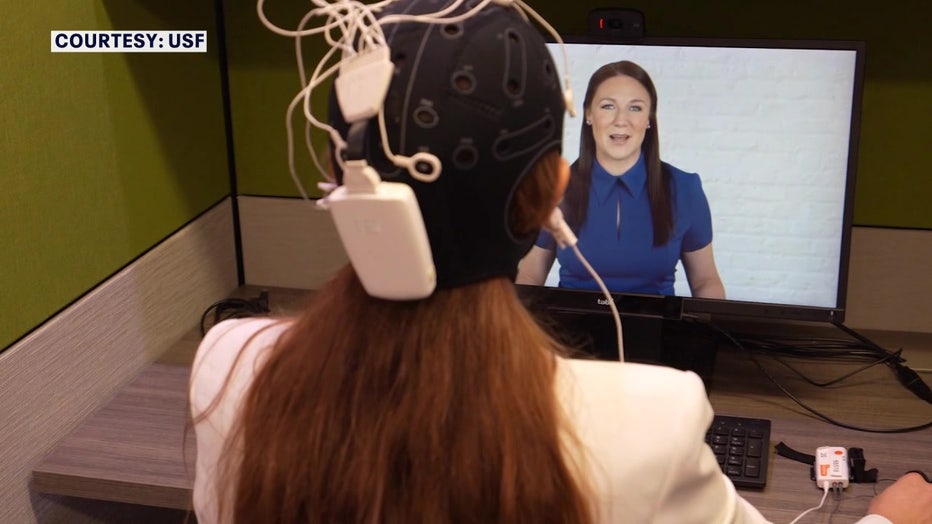USF College of Business unveils state-of-the-art A.I. lab
Step inside USF’s new A.I. lab
USF business students are now able to use artificial intelligence to learn how to better market messaging and products to consumers. Jennifer Kveglis reports.
TAMPA, Fla. - Students and faculty at the USF Muma College of Business can now utilize groundbreaking technology at the first of its kind Behavioral A.I. Lab.
"It’s an exciting opportunity to be able to bring technology and recognize what’s happening in the marketplace and experience that through learning environments," said Dr. Robert Hammond, director of the USF Center for Marketing and Sales Innovation. "The lab itself is 1,600 sq feet. There are five interaction rooms and 20 stations. That makes it one of the larger facilities like it frankly anywhere in the world."
Dr. Jill Schiefelbein graduated from USF with a doctorate degree from the college of business said A.I. can help better market messaging and products to consumers.
READ: Plant City company installs artificial intelligence in trucks to keep drivers safe on the road
"One of the things that’s really fascinating about research in the area of behavioral AI, generative AI is that we have a lot of subjective data but not tons of objective data," she said. "Just getting someone’s opinion or perspective on it, isn’t enough. We need to pair that subjective data, participant data with objective data that we can actually verify."

USF says its Behavioral A.I. Lab is the first of its kind.
Dr. Hammond said the gadgets in the lab help gather that data by reading the brain without actually going inside it. Some of those tools are eye and face tracking technologies.
He said, "Another one we can look at is EEG so the brain waves and actually looking at the brainwaves and understanding what part of the brain is lighting up based upon their experiences there."
MORE: Businesses incorporate Artificial Intelligence into customer service
The newest addition to the lab are glasses that students and faculty can utilize on the go, in the real world.
Dr. Schiefelbein said, "I think it’s really exciting that students, faculty, and staff at USF have access to a lab that not only brings cutting edge research methodologies to the table but really gives a way to focus on behavioral aspects of AI."

